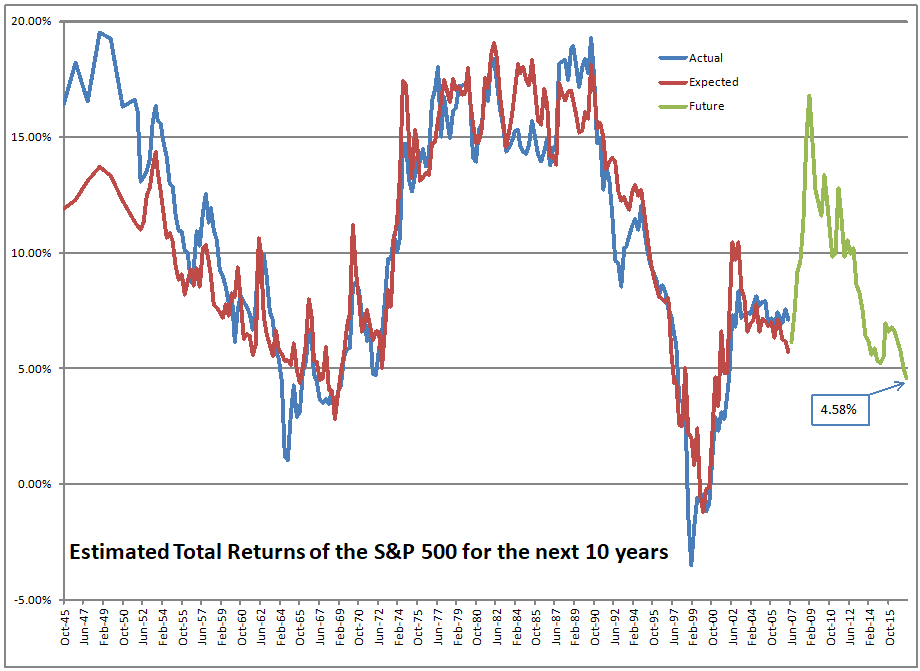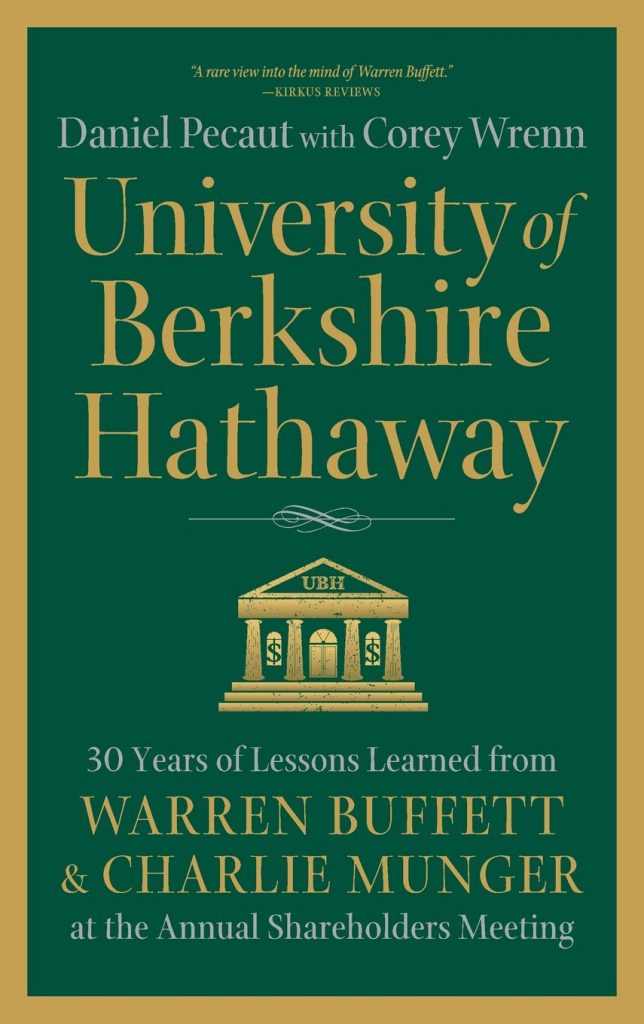Estimating Future Stock Returns, June 2017 Update
I’d say this is getting boring, but it’s pretty fascinating watching the rally run. ?Now, this is the seventh time I have done this quarterly analysis. ?The first one was for December 2015. ?Over that time period, the expected annualized 10-year return went like this, quarter by quarter: 6.10%, 6.74%, 6.30%, 6.01%, 5.02%, 4.79%, and 4.30%. ?At the end of June 2017, the figure would have been 4.58%, but the rally since the end of the quarter shaves future returns down to 4.30%.
We are now in the 93rd percentile of valuations.
Wow.
This era will ultimately be remembered as a hot time in the markets, much like 1965-9, 1972, and 1997-2001.
The Internal Logic of this Model
I promised on of my readers that I would provide the equation for this model. ?Here it is:
10-year annualized total return = 32.77% – (70.11% * Percentage of total assets held in stocks for the US as a whole)
Now, the logic of this formula stems from the idea that the return on total assets varies linearly with the height of the stock market, and the return on debt (everything else aside from stocks) does not. ?After that, the formula is derived from the same formula that we use for the weighted average cost of capital [WACC]. ?Under those conditions, the total returns of the stock market can be approximated by a linear function of the weight the stocks have in the WACC formula.
Anyway, that’s one way to think of the logic behind this.
The Future?
Now, what are some of the possibilities for the future?
Above you see the nineteen scenarios for where the S&P 500 will be in 10 years, assuming a 2% dividend yield, and looking at the total returns that happen when the model forecasts returns between 3.30% and 5.30%. ?The total returns vary from 2.31%/year to 6.50%, and average out to 3.97% total returns. ?The bold line above is the 4.30% estimate.
As I have said before, this bodes ill for all collective security schemes that rely on the returns of risky assets to power the payments. ?There is no conventional way to achieve returns higher than 5%/year for the next ten years, unless you go for value and foreign markets (maybe both!).
Then again, the simple solution is just to lighten up and let cash build. ?Now if we all did that, we couldn’t. ?Who would be buying? ?But if enough of us did it such that equity valuations declined, there could be a more orderly market retreat.
The attitude of the market on a qualitative basis doesn’t seem nuts to me yet, so I am at maximum cash for ordinary conditions, but I haven’t hedged. ?When expected 10-year market returns get to 3%/year, I will likely do that, but for now I hold my stocks.
PS — the first article of this series has been translated into Chinese. ?The same website has 48 of my best articles in Chinese, which I find pretty amazing. ?Hope you smile at the cartoon version of me. 😉







